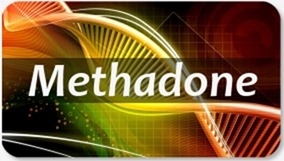Used successfully for more than 40 years, methadone has been shown to eliminate withdrawal symptoms and relieve drug cravings from heroin and prescription opiate medications. ~SAMHSA
About Methadone
Methadone is an FDA-approved, synthetic opioid medication primarily prescribed to manage chronic pain or to treat moderate to severe opioid addiction. Methadone is extremely effective at eliminating painful opioid withdrawal symptoms. It has been in use for over 40 years as a treatment for opioid dependence and is the leading “medication-assisted treatment” for those people who have struggled with opioid addiction.
Methadone is safe when taken as prescribed. It is traditionally dispensed by Opioid Treatment Programs (OTP’s) and requires that the patient present in person each day to receive the medication. This in-person dosing allows the clinic’s medical staff to help the patient get adjusted to the correct dose of methadone that will alleviate their withdrawal symptoms.
Once a patient has achieved good stabilization with methadone and made progress in their treatment program, they will have the opportunity to earn medication take home privileges. Take home medication allows a person to bypass trips to their local clinic since they may have several days of medication at home.
Available By Prescription Only
It is important to emphasize that a physician prescribes methadone. The methadone that ADS provides comes in liquid form so that it is easily swallowed and absorbed. At ADS, trained medical and clinical staff oversee the daily operation of the methadone clinic and interact with each patient to assess how they are progressing with their recovery program and adjustment to methadone. ADS places high priority on patient safety, recovery, and overall patient care.
Interesting Facts about Methadone
- There are about 1400 methadone clinics in operation across the United States treating over 250,000 patients each day (Source: 2006 report by SAMHSA).
- Methadone treatment is often covered by Medicaid and State funds (for qualifying individuals).
 Methadone blocks the effects of other opiates and reduces cravings for opiates thus aiding in relapse prevention.
Methadone blocks the effects of other opiates and reduces cravings for opiates thus aiding in relapse prevention.- The NIH (National Institute of Health) estimate the monetary costs of untreated opioid addiction to be in excess of $20 billion annually.
- Opioid treatment utilizing methadone medication has been deemed a best practice by SAMHSA.
- Methadone is slow acting, but long lasting.
- Methadone does not harm tissues or organs.
- Methadone does not produce a drug high for patients on a stable dose.
- Patients receiving methadone can drive a car, work, play, and function normally in all aspects of life.
- Methadone is a cost-effective form of treatment when compared to the various costs associated with untreated addiction.
> For more on the ADS Opioid Treatment Program
> To read the ADS Methadone Program Handbook online
> Information on How Much Methadone Is Enough?
> Overview of Suboxone for Opioid Addiction
From the NIHCM Foundation: Information on medication-assisted treatment for opioid adidction










